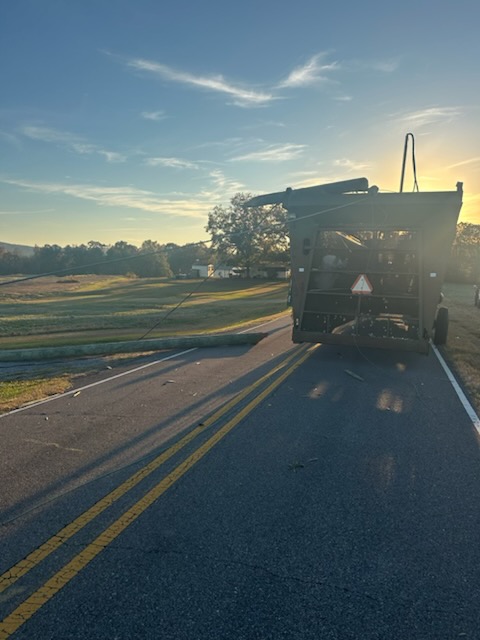Turkey is the most popular dish during Thanksgiving celebrations, yet there are many inexperienced cooks who will be in the kitchen. The U.S. Department of Agriculture (USDA) is encouraging consumers to practice food safety throughout the entire Thanksgiving process, from the grocery store to the dining table.
“On the most popular food holiday of the year, we’re reminding consumers to follow safe food handling practices starting at the grocery store and going all the way through enjoying your leftovers,” said Under Secretary for Food Safety Dr. Emilio Esteban. “Following these basic steps can help keep your family and friends safe this holiday season.”
To keep your Thanksgiving food safe, follow this guide:
Shopping
Bacteria can multiply to dangerous levels if perishables, like turkey, are left in the Danger Zone (temperatures between 40 F and 140 F) for too long. Pick up your turkey and other perishable products at the end of your grocery shopping so they stay cold as long as possible. Pack perishables in insulated bags with cold sources if the commute home is longer than an hour and place them in the refrigerator as soon as you get home.
- Make sure the packaging of your turkey is not torn or leaking. Juices from raw poultry can cause cross-contamination of harmful bacteria that can get you sick. Place turkey, and other raw meat products, in plastic bags and in a separate part of your shopping cart to prevent harmful bacteria from spreading.
- Thawing
A frozen turkey can be safely thawed in the refrigerator or in cold water:
- When thawing in a refrigerator at 40 F or below, allow roughly 24 hours for every 4 to 5 pounds. Consider putting the turkey in a container or dish to contain juices that may leak.
- When thawing in cold water, allow roughly 30 minutes per pound. Submerge the wrapped turkey into the cold water and change the water every 30 minutes until the turkey is fully thawed. Once thawed, cook the turkey immediately.
- Preparing
When it is time to prepare the turkey, keep in mind that turkeys may contain bacteria that cause foodborne illness. Keep the turkey and its juices separate from foods that won’t be cooked and fully clean and sanitize surfaces that come into contact with the turkey and its juices. A USDA study found that about 30% of consumers did not successfully clean and sanitize kitchen surfaces around meal preparation.
Washing a turkey is risky because it can spread bacteria to your sink and other nearby surfaces. If you choose to wash it, make sure to fully clean surfaces with soap and water afterwards and then sanitize using a sanitizing solution.
Cooking
There are many ways to cook a turkey, but one thing remains consistent: the turkey needs to reach a safe minimum internal temperature of 165 F, as measured by a food thermometer, in three places — the thickest part of the breast, the innermost part of the thigh, and the innermost part of the wing. Always use a thermometer to make sure the turkey is fully cooked even if the turkey has a pop-up temperature indicator. If stuffing your turkey, the stuffing must also reach 165 F in the center of the stuffing.
Serving
- When serving food to groups, remember the two-hour rule. Perishable foods that have sat out at room temperature for more than two hours are unsafe, due to bacterial growth, and must be discarded. When you are serving food, keep your hot food hot and cold food cold. This will keep it from developing harmful bacteria. Hot foods such as turkey, macaroni and cheese, stuffing, mashed potatoes and gravy must be kept at or above 140 F and you can do so by serving them in warming trays, chafing dishes, slow cookers, etc.
- Cold foods such as salad, cranberry relish, deviled eggs and cold dips must be kept below 40 F and you can do so by serving them in trays or bowls nestled over ice. Remember to replace the ice as it melts. You can also serve cold foods by dividing them in small portions and serving them a portion at a time, keeping the remainder in the refrigerator.
Leftovers
Leftovers are arguably one of the best parts of Thanksgiving. For leftovers to be safe to keep, they must be refrigerated within two hours of serving or have been kept hot at or above 140 F or cold below 40 F. Discard any foods that sat out for more than two hours at room temperature because bacteria that cause foodborne illness could have reached dangerous levels. If you have turkey leftovers, carve the bird into smaller pieces and place them into small, shallow containers so the meat can cool evenly and quickly.
If you have food safety questions while planning and preparing your Thanksgiving feast, call the USDA Meat and Poultry Hotline at 1-888-MPHotline (1-888-674-6854), email MPHotline@usda.gov or chat live at www.ask.usda.gov 10 a.m. to 6 p.m. Eastern Time, Monday through Friday to reach a food safety specialist in English or Spanish. The Meat and Poultry Hotline is also open on Thanksgiving Day from 8 a.m. to 2 p.m. Eastern Time.
Access news releases and other information at USDA’s Food Safety and Inspection Service’s (FSIS) website at www.fsis.usda.gov/newsroom. Follow FSIS on X at @usdafoodsafety or in Spanish at X @usdafoodsafety_es and USDA on Instagram at @usdagov and Facebook.
USDA touches the lives of all Americans each day in so many positive ways. In the Biden-Harris Administration, USDA is transforming America’s food system with a greater focus on more resilient local and regional food production, fairer markets for all producers, ensuring access to safe, healthy and nutritious food in all communities, building new markets and streams of income for farmers and producers using climate smart food and forestry practices, making historic investments in infrastructure and clean energy capabilities in rural America, and committing to equity across the Department by removing systemic barriers and building a workforce more representative of America. To learn more, visit www.usda.gov.





